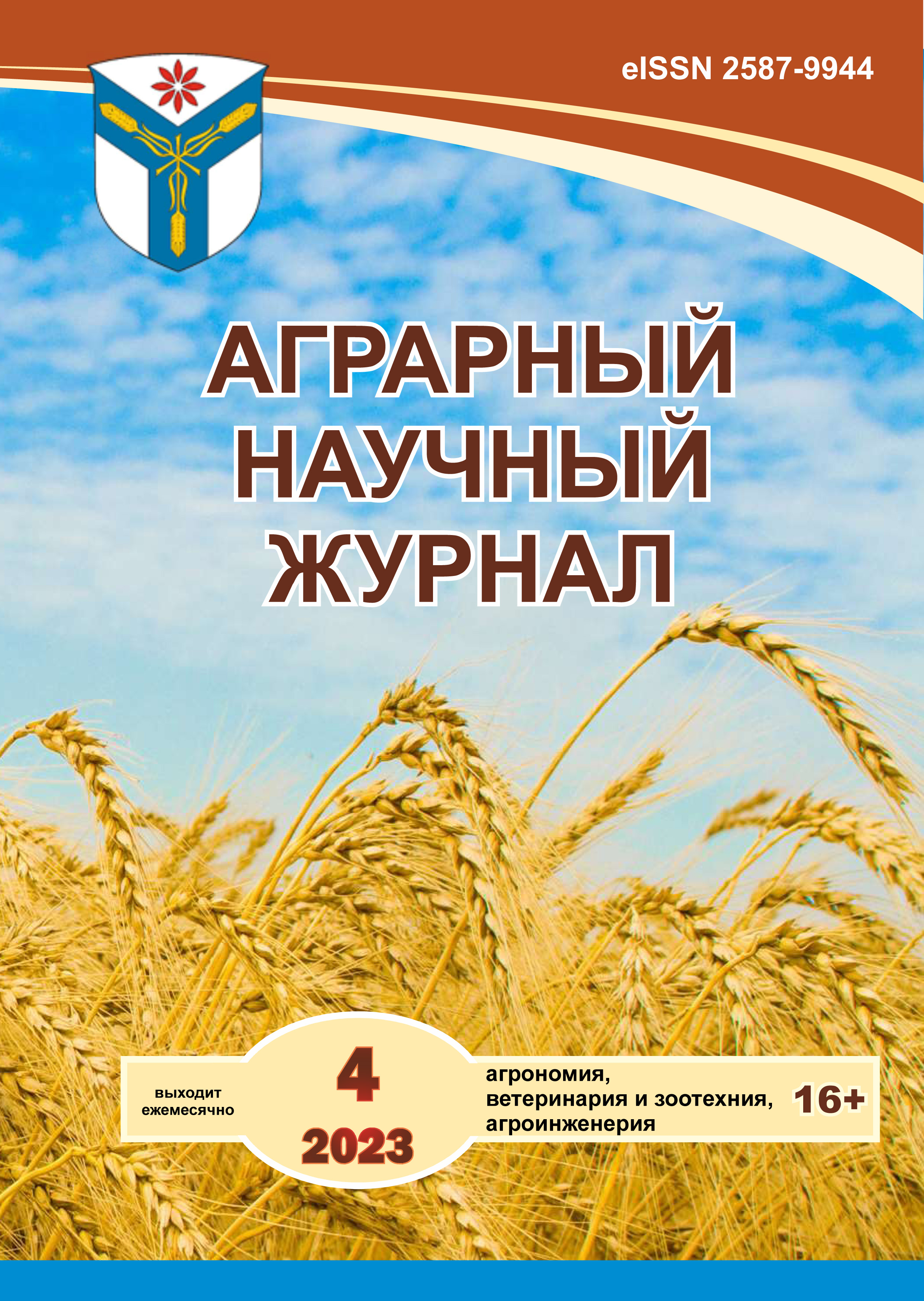ANALYSIS OF THE PROCESS OF REGULATION OF GRAIN SHREDDER MODES ON A STEP-ROTARY SHREDDER
DOI:
https://doi.org/10.28983/asj.y2023i4pp106-111Keywords:
grain shredder, degree of grinding, rotor, angular velocity, productivity, control rangeAbstract
One of the main problems of the branches of the modern grain processing industry, including milling, cereal and feed production, is their very high energy intensity. In order to achieve high economic indicators in the livestock industry, the feed ration must contain a certain set of substances that fully meets the needs of the animal's body in nutrients. This is possible by preparing full-fledged compound feeds. Therefore, the production of compound feeds is an important branch of agriculture. .Regulation of the degree of grinding of feed grain on rotary grinders can be done by changing the angular velocity of the rotors. The purpose of this work was to conduct a theoretical analysis and practical verification of the process of regulating the degree of grain grinding by regulating the angular velocity of the rotors. When choosing the control scheme of the electric drive, factors such as the structure of the installation, drive power, control range, physical and mechanical properties of the crushed material were taken into account. For two-rotor shredders, there are two variants of the technological process. At the same rotor speeds, depending on the structural parameters of the installation, the power consumption of a small rotor is 60... 80% of the power of a large one. To improve the use of the chopper drive motors, the angular velocity of one drive and the plant performance should be adjusted simultaneously so that the power on the second engine remains constant.
Downloads
References
Бирков С.В., Пилюгин К.А., Сабиев У.К. Измельчители фуражного зерна. Уфа, 2017. С. 10-13.
Искендеров Р.Р., Очинский В.В., Лебедев А.Т. Измельчение зерновых материалов: проблемы и способы их решения // Актуальные проблемы научно-техни¬ческого про-гресса в АПК: сборник научных статей «Агро¬уни¬вер¬сал». Ставрополь, 2015. С. 19-22.
Лухт Е. Ступенчатое измельчение в молотковой и вальцовой дробилках // Комбикор-ма. 2012. № 1. С. 55-57.
Сергеев Н. С. Центробежно-роторные измельчители фуражного зерна: автореф. дис. … канд. техн. Наук. Челябинск, 2008.
Ляпин В.В. Совершенствование рабочего процесса ударно-центробежного из¬ме-льчителя: автореф. дис. … канд. техн. наук. Воронеж, 2009. 18 с.
Василенко Н., Типов В. Дезинтегратор для измельчения зерна и минерального сырья: научное издание // Комбикорма. 2007. №5. С. 40.
Сабиев У.К., Пушкарев А.С. Модернизированный измельчитель зерновых материалов // Электронный научно-методический журнал Омского ГАУ. 2017. № 1(8). С. 221-227.
Лебедев А.Т., Искендеров Р.Р., Шумчкий А.С. К вопросу повышения долговечности рабочих органов ро¬тор¬ной дробилки // Наука в цен¬траль¬ной России. 2018. № 5(29). С. 36-43.
Савиных П.А., Па¬ли¬цын А.В., Иванов И.И. Исследование измельчителя фуражного зерна роторно-цен¬тро¬бежного типа с различными рабочими органами // Молочно хо-зяйственный вестник. 2017. № 2(26). С. 119-130.
Сергеев Н.С. Центробежно-роторные измельчители фуражного зерна: автореф. дис. … д-ра техн. наук. Челябинск, 2008. 40 с.
ГОСТ 9268-90 Комбикорма-концентраторы для крупного рогатого скота. Тех-нические условия. М., 2002. 118 с.
Downloads
Published
Issue
Section
License
Copyright (c) 2023 The Agrarian Scientific Journal

This work is licensed under a Creative Commons Attribution-NonCommercial-NoDerivatives 4.0 International License.








